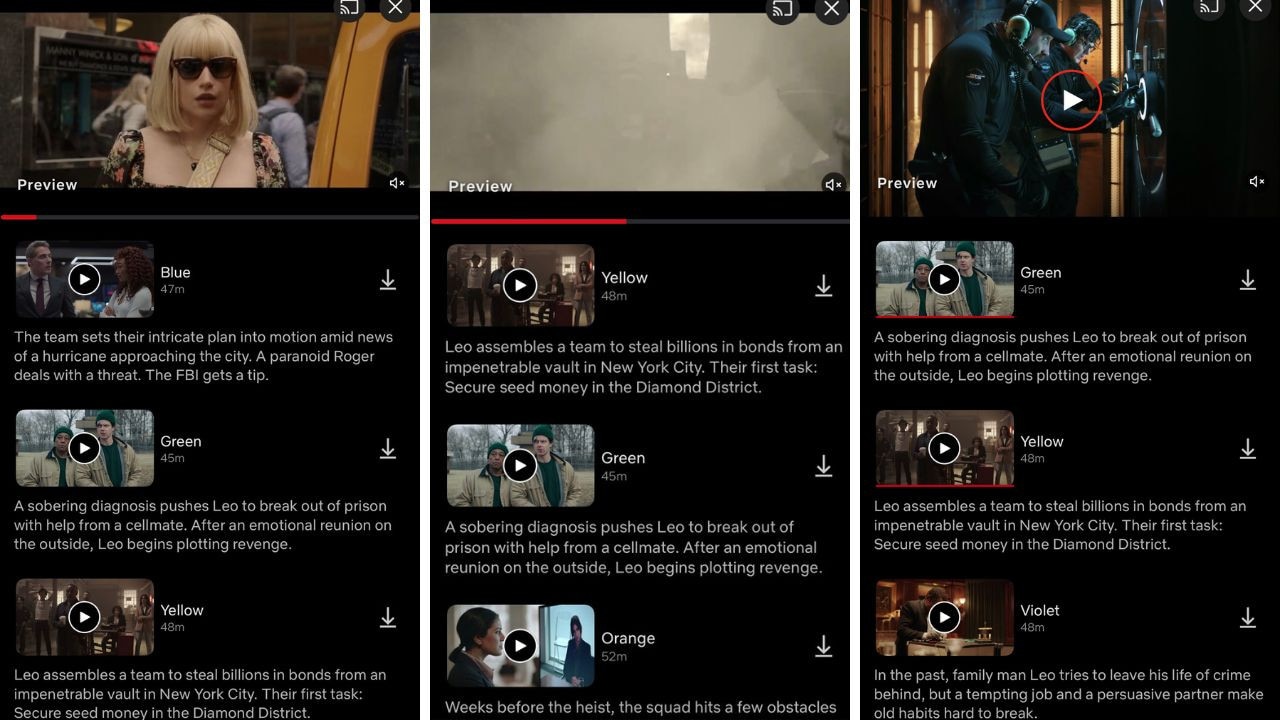Netflix’s Kaleidoscope: A storytelling experiment gone wrong
Netflix’s new series lets viewers choose their own way through a thrilling heist but it doesn’t work as well as it should.

We should always encourage experiments in storytelling. Evolution in form and ideas keep things exciting and fresh. The old adage of “it ain’t broke, don’t fix it” is creative cowardice.
But what happens when the experiment ends up a dud? Was it the idea itself or just the execution? Will it become a cautionary tale to stop others from trekking down the same path or does it embolden someone who saw the possibility if not the end result?
That’s the conundrum of Kaleidoscope, a Netflix heist thriller which aimed to do something different but, ultimately, scrambled any shot at a compelling narrative.
The idea behind the eight-episode series starring Giancarlo Esposito is that you can watch any of its first seven episodes in whichever order, and it’ll still make sense, as long as you end with the intended finale (“White”) as the last chapter.
Sounds simple but not, right?

Kaleidoscope’s core plot works for the experiment – a familiar heist scheme centred on a career criminal named Leo (Esposito), who breaks out of prison and assembles a team to pull off a $7 billion robbery under the cover of an event.
And the target is a man (Rufus Sewell) who was wronged him in the past, and who is now entangled with someone close to him, his daughter (Tati Gabrielle). So, it’s also a revenge story.
If it seems like it’s hitting similar beats to Ocean’s 11, it is and that’s not necessarily a bad thing because no matter where you start the series, audiences are so conversant with the tropes of the heist genre, the viewer can fill in any blanks on the plot level.
You can start with episode five and pick up what’s going on, you can start with episode three and the same applies – because you’ve seen some version of this story 47 other times.
Each episode is a slice of time in the lead-up to and after the heist, for example, six weeks beforehand, 24 years or the morning after, ending with the heist itself.
The options to choose your own order equals more than 5000 possibilities – so says someone else who did the maths – or you could just sit back and watch it in the order in which it’s presented on the episode page, and let the autoplay roll on and on.
Each viewer will also get a different order on their profiles, so if you follow that, it still won’t be the same experience as your friend’s.

That’s the technical side of Kaleidoscope, but does this mix-and-match approach work for this particular story, set of characters and thematic ambition, as set out by creator Eric Garcia? No, not so much.
The weak point in Kaleidoscope is it’s just not very good, especially the writing which really sags under the burden of its non-linearity. Most of the characters are poorly developed, with thin (or absent) arcs.
Perhaps that’s a function of needing to service the format but it also means it’s a story in which you find yourself investing in very few people. Esposito’s lead, Leo, is the only one who really gets enough material to work with, and even that is disjointed.
For example, if you chose to start with “Yellow”, that’s a chapter which jumps headfirst into the heist plotting. Characters are not introduced and it doesn’t establish any of the relationships with any weight.

It’s only later when you press play on either “Green” or “Violet”, both of which are set years before the heist, that Leo’s backstory is revealed and the character’s emotional foundation does the heavy lifting.
Or if you started with the episodes which take place after the heist, yes, you can work out what’s happened and work backwards, but you’re also being asked to care about the fates of people who have not earnt that investment.
That Kaleidoscope has very few thematic or character through-lines to sink into is down to its anaemic scripts.
There are many screen stories that play around with time, linearity and perspectives, but the better ones have clarity of emotional stakes at any given moment in the story, and Kaleidoscope doesn’t have that sophistication.
So while the format has promise, the idea and the material was a poor match. Maybe someone else can come along and do better with it.
Kaleidoscope is streaming now on Netflix






